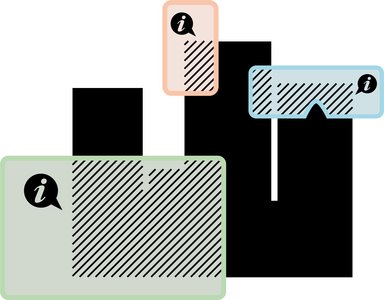USP - Augmented Reality
Why
Communication is an essential factor in (urban) planning processes to achieve successful and sustainable solutions. Especially noteworthy is the early exchange with the effected public, to generate not only higher acceptance but also valuable feedback for the planning task. Traditional, mostly static media of architectural communication such as plans or models meet their limits in the communication of complex spatial information and contexts as well as in the illustration of dynamic processes and temporal sequences. Augmented Reality (AR) as a medium offers significant possibilities in providing understandable information in architectural and urban planning. The perceptual representation of proportions, dimensions, and location simplify spatial understanding and evaluation
Within the research project USP | Urban Strategy Playground we develop innovative methods and tools to support urban planning. One focus is on the effective presentation and comparison of different planning variants. In this context, AR offers essential possibilities for new visualization strategies and thus for an understandable provision of information in the context of planning projects.
Goal
In the field of Augmented Reality research there are still many open questions concerning the presentation of content. The context (e.g. 1:1 on-site, overlaid with classical media such as plans or models) and interaction possibilities, which must be considered in relation to different technologies and platforms. In a communication context, individual views and options require individual information processing capabilities adding further quieries.
The focus of this project lies on the accessible communication of planning content within the framework of participation processes. The scenarios range from information (single user) to support for presentation and discussion scenarios (multi-user).
Exemplary structure of a thesis
1. Gain an overview of existing and potential (research) applications/approaches in the context of your chosen topic/task. (Literature Research and Case Studies)
2. Derived from the study, you analyze and compare the advantages and disadvantages of the different approaches and highlight current deficits. On this basis, you develop a concept and a suitable experimental setup/study.
3. You develop a functional prototype in the architectural context tailored to your experimental setup.
4. You conduct the study (e.g., user tests) and evaluate your results.
5. The last step is the evaluation of the prototype, as well as identifying the advantages and disadvantages of your approach. You discuss your results critically and highlight your findings.
Requirements
- Interest in Augmented Reality and the challenges associated with it
- Experience with interaction concepts and evaluation methods
- Basics in the implementation of AR applications (e.g. Unity 3D (C#)) can be advantageous.
Interested?
Dipl.-Ing. Michael Mühlhaus
Email: michael.muehlhaus@tum.de
Link: www.ar.tum.de/ai/forschung/usp-urban-strategy-playground/
